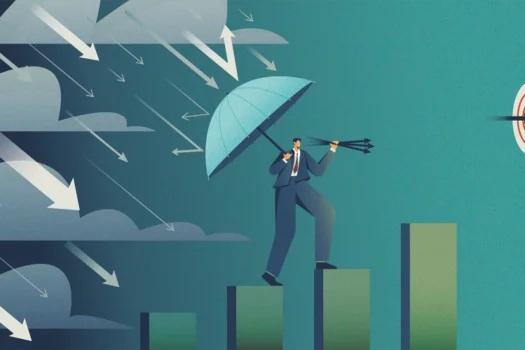For 108-year-old glass packaging manufacturer Vetropack, the integrated reporting (IR) framework serves as the basis for an accurate representation of its holistic business model. This is because Vetropack’s model is geared toward long-term value creation and has long combined financial and non-financial aspects. The switch to integrated reporting was therefore a natural step for Vetropack, but one that did not come without challenges.
Switch to integrated reporting
Melting furnaces are the heart of the glass manufacturing process. They last up to 15 years and represent Vetropack’s largest investments. This long investment cycle underpins the long-term thinking behind Vetropack’s decision to commit to integrated reporting.
The decision was also part of the company’s development of an integrated 10-year strategic plan, with which the company aims to contribute to the transformation of the entire industry. The intensive discussions on future positioning reinforced Vetropack’s notion that separate reporting with a financial report and a sustainability report did not adequately explain the interconnectedness of all financial and non-financial aspects of the business. In the same year, the company developed its first integrated report, which was published in 2020.
Vetropack’s approach
For Vetropack, it was important to set a clear focus for the report as a first step. The company conducted a materiality assessment and used the resulting topic matrix as a structuring element of the report. At the same time, Vetropack developed a visual representation of its integrated business model. This shows in a simple way how Vetropack creates value for different stakeholder groups. It highlights achievements such as the development of innovative products with customers, strong and lasting relationships with suppliers and support for employee development, underlining that Vetropack’s success cannot be reduced to financial performance.
A challenging transition
As a result of the new reporting concept, Vetropack now publishes comprehensive non-financial information every year – in contrast to the previous biennial sustainability reporting schedule. However, Vetropack’s core business is characterized by a rather slow pace of change, which makes the annual development of a fully integrated report challenging.
With the changeover, Vetropack also decided to create an “online first” report. In the first year, it was therefore necessary to set up an online reporting system – a considerable investment, but one that would pay off immensely in terms of ease, efficiency and workflow in subsequent years.
“We wanted the IR process to help us reinvent ourselves, and it did.”
Elisabeth Boner
How Vetropack benefitted from IR
The integrated report enables Vetropack to demonstrate in a transparent, coherent and entertaining way how the company creates long-term value beyond its pure financial results. This goes hand in hand with the new concept of online reporting, which enables Vetropack to use videos as a narrative medium. This delivers a two-pronged benefit. First, video makes it easier to explain complex issues. Second, through video and motion, Vetropack brings more personality and “infotainment” to its reporting, which rarely comes into play in a printed report.
Finally, the integrated report also has a change management function for Vetropack, because the IR process supports integrated thinking and action within the company, strengthening the mindset required to implement the new business strategy.
Tips for developing an IR
- Develop a concept or unifying theme for your integrated report. An IR does not solely consist of a sustainability chapter in the annual report.
- Create a visual representation of your integrated business model to articulate multidimensional value creation.
- Start small and develop the IR incrementally.
- IR requires input from many business functions. Break down silos and engage relevant people early in the process.
- Get support from specialists. IR is a challenging process, and you will have many questions. In the case of Vetropack, the creative agency NeidhartSchön led the implementation of the online report. For the concept and implementation, Vetropack received support from Sustainserv.
The original text entitled “Integrated report reflects long-term focus” by Elisabeth Boner and Stefan Lügstenmann was published in issue 18 of The Reporting Times, the trade journal of the Center for Corporate Reporting (CCR).
Get in touch. We are happy to tell you more about it.







